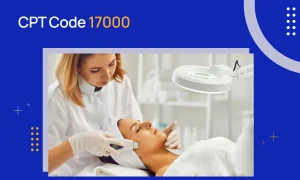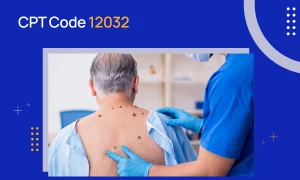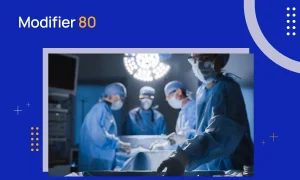Liver diseases are among the fastest-growing ailments in the USA. According to the American Liver Foundation, more than 100 million people are suffering from some form of liver disease, and many don’t even realize they have it.
Non-invasive imaging diagnostics like liver elastography have become game-changers. They provide a safer alternative to biopsies, which are famous for going wrong with even the slightest mistakes. However, billing of these procedures is quite complex, and even experienced billers can struggle sometimes.
Usually, non-invasive liver stiffness measurement is billed under the CPT code 91200. However, learning how to use it correctly is essential because minor errors can lead to claim denials. That is why our medical billing and coding experts have created this guide. It serves as a one-stop resource to master CPT code 91200.
So, without any further ado, let’s get started.
CPT Code 91200 Description
So, what is CPT 91200?
Well, to put it simply, it refers to a non-invasive test called liver elastography. The purpose of this test is to check the stiffness of the patient’s liver. By determining the stiffness, doctors can get an idea about any underlying liver problems like scarring (fibrosis) or cancer.
Liver elastography is a highly successful medical procedure, which is why most insurance companies readily reimburse for it, given that you bill it correctly. In fact, studies show it is about 87% accurate at finding serious liver scarring and 91% accurate at ruling it out.
Let’s understand how liver elastography works.
The test involves a hand-held device, like FibroScan®. This device sends gentle vibrations through the liver. These vibrations create “shear waves,” and the speed of these waves tells physicians how elastic or stiff the liver tissue is. Non-malignant tumors are more elastic than cancerous ones but less elastic than normal liver tissue.
So, now that you know what CPT code 91200 explains, let’s look at a couple of scenarios where you can use it.
Appropriate Use Cases for CPT Code 91200
Here are some real-world scenarios where you can use CPT code 91200 for billing:
Evaluation of Liver Fibrosis in Chronic Liver Disease
Imagine a patient who is suffering from chronic hepatitis B. It is a fairly common disease affecting between 850,000 and 2.2 million Americans. The patient visits the gastroenterologist for treatment. However, before providing any medication, the gastroenterologist needs to know the extent of liver damage.
The specialist orders a liver elastography to evaluate the extent of fibrosis, as stiffness correlates with scarring severity. The results of this test will help him decide whether to start antiviral therapy or continue monitoring. CPT code 91200 is billed to capture this essential assessment.
Assessing Pediatric Liver Conditions
Picture a child with suspected biliary atresia, a rare condition affecting 1 in 10,000 to 15,000 infants in the USA. To start the treatment, the gastroenterologist first needs to evaluate the current liver condition. However, invasive biopsies carry high risks, especially for children.
So, a non-invasive elastography is performed to measure liver stiffness and perform surgical planning. CPT code 91200 ensures accurate reimbursement for this tailored, child-friendly approach.
Modifiers to Append with CPT Code 91200
Not using the correct modifier (when needed) will result in a claim denial if you have used the correct code. Some of the most commonly used modifiers with 91200 are discussed in the following sections:
Modifier 22
Add this modifier when the liver elastography demands more time, skill, or resources than standard due to complexity or patient factors, justifying higher reimbursement.
Modifier 25
Include this modifier with CPT 91200 when the same provider performs a distinct evaluation and management (E/M) service on the same day as the liver elastography.
Modifier 26
You can use this modifier with CPT code 91200 when a doctor only reviews liver elastography results and writes a report, billing solely for the professional component.
Modifier 52
Append this modifier if the CPT 91200 procedure is partially completed or altered from standard practice, informing the payer of the reduced service scope.
Modifier 53
Report this modifier if the liver elastography begins but is halted for unexpected reasons, like patient safety concerns, outside the provider’s control.
Modifier 59
Add this modifier to show the payer that the liver elastography is a separate, payable service from others performed on the same day, preventing payment bundling errors.
Modifier 76
Attach this modifier when the same provider repeats the CPT 91200 procedure on the same day, clarifying it as a necessary repeat, not a billing mistake, to avoid claim rejection.
Modifier 77
Include this modifier if a different physician repeats the liver elastography on the same day, signaling to the payer that the repeat was essential and merits payment.
Modifier 91
Use this modifier when the procedure is repeated on the same day for subsequent results, notifying the payer of the medical necessity.
Modifier TC
Apply this modifier if the provider conducts the liver elastography but does not interpret the findings. This way, you only get the payment for the technical component.
Reimbursement Guidelines for CPT Code 91200
Refer to the following CPT code 91200-specific billing and reimbursement guidelines to mitigate claim denials.
Establish Medical Necessity and Ensure Accurate Documentation
Documentation must justify the procedure’s medical necessity. Attach all the documents with your claim that can provide some insight into the provider’s rationale behind ordering a liver elastography. These documents can include physician’s notes, prescriptions, or any other laboratory test results.
Apart from this, the attached documents must provide details about the following:
- Patient condition and test rationale.
- The technique (e.g., 10 shear wave pulses via FibroScan).
- Results (m/s or kPa) and how the doctor interpreted them.
- Clinical recommendations.
Use Appropriate Modifiers
As we discussed above, modifiers are necessary to provide supplemental information. Without the right modifiers, your claims may get denied.
Modifiers clarify billing intent. For example, if a hospital bills the technical component (TC) and the physician bills interpretation (26), both claims align with Medicare’s split-payment model.
Stay Updated On Payer Policies
Reimbursement policies vary for each insurer, whether it be Medicaid, Medicare, or any commercial payer. Plus, the reimbursement amount is also different for every location.
So, always keep in touch with the insurance payers to stay updated on the latest billing guidelines and their policies.
Final Thoughts on CPT Code 91200
The CPT code 91200 is one of the most used billing codes in gastroenterology. According to the data, liver elastography (CPT 91200) accounted for 30.40% of all gastroenterology procedures in 2023. So, it is important to get it right if you don’t want to lose a ton of money.
We covered the role of CPT 91200 in assessing liver stiffness, some scenarios where it can be used, and its applicable modifiers.
If you find it difficult to keep up with the latest payer guidelines and the complexity of medical coding, consider our expert gastroenterology billing services to optimize your revenue cycle.
FAQs
Is CPT code 91200 covered by Medicare?
Yes, liver elastography (CPT code 91200) is covered by Medicare. However, healthcare providers must ensure thorough documentation and compliance with local MAC rules.
What is the difference between CPT codes 91200 and 76981?
CPT code 91200 describes a mechanically induced shear wave elastography (an imaging technique) to assess liver stiffness. On the other hand, the CPT 76981 code is used for ultrasound elastography. High-intensity ultrasound waves distort the organ and measure its return to the normal shape to analyze the organ’s functional (nonconnective, nonstructural) tissue. Moreover, in 76981, different organs can be diagnosed.



